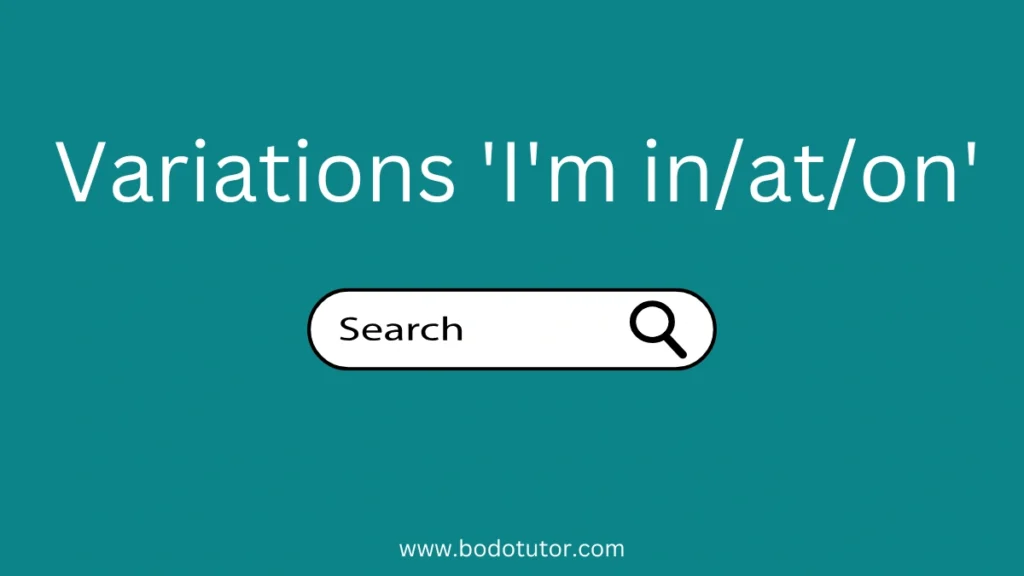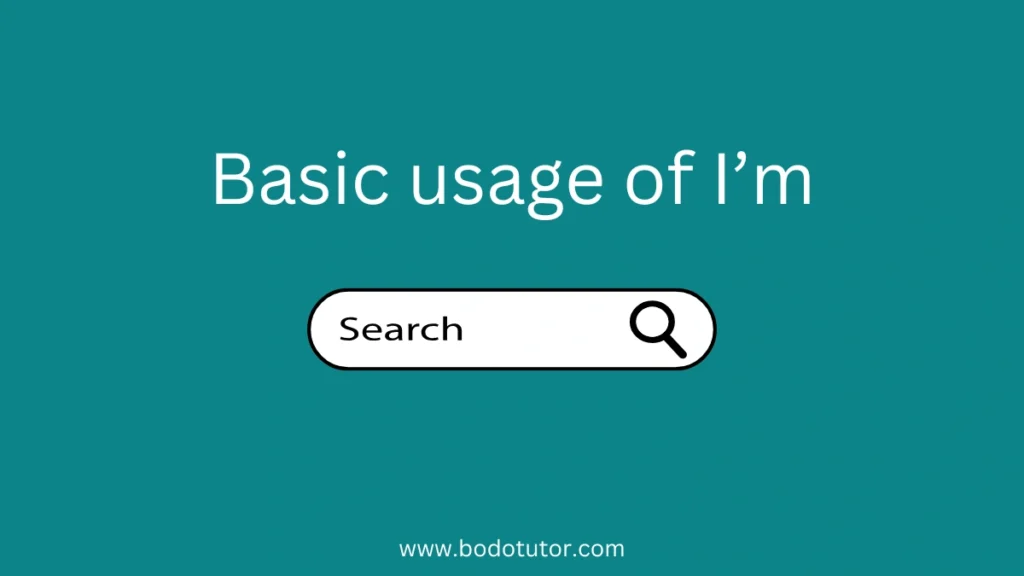The phrases “I’m in,” “I’m at,” and “I’m on” are used in different contexts to describe location, position, or involvement. Here’s how they vary:

Variations ‘I’m in/at/on’| Learn English in Bodo
1. “I’m in”
- Indicates being inside a space or enclosed area.
- Examples:
- I’m in the room. आं खथायाव दं।
- I’m in the car. आं गारियाव दं।
- I’m in New York. आं निउ यर्कआव दं।
2. “I’m at”
- Refers to a specific point or location, often emphasizing presence at a place rather than inside it.
- Examples:
- I’m at the bus stop. आं बास लाखिग्रा जायगायाव दं।
- I’m at school. आं फरायसालियाव दं।
- I’m at the park. आं पार्काव दं।
3. “I’m on”
- Used when referring to a surface or being atop something. It can also indicate involvement in an activity.
- Examples:
- I’m on the roof. आं उखुमआव दं।
- I’m on the bus. आं बासाव दं।
- I’m on a call. आं कल खालामगासिनो।
Comparison Examples:
- I’m in the building. आं बिलडिंआव दं।(Inside the structure)
- I’m at the building. आं बिलडिंआव दं। (At its location but not necessarily inside)
- I’m on the building. आं बिलडिंआव दं। (On its surface, like the roof or a balcony)
उफ्रा बिदिन्थि
“I’m in the shower.” “आं दुगैदों”।
“I’m in a car.” “आं गारियाव दं।
“I’m in a house.” “आं गंसे न’आव दं।
“I’m in a school.” “आं गंसे फरायसालियाव दं ।
“I’m at the grocery.” “आं गलायाव दं।”
“I’m at the mall.” “आं मलआव दं।”
“I’m at the doctor’s office.” “आं डाक्टारनि मावख’आव दं।”
“I’m at the park.” “आं पार्काव दं।
“I’m at the airport.” “आं बिरखं गाथोनाव दं।




